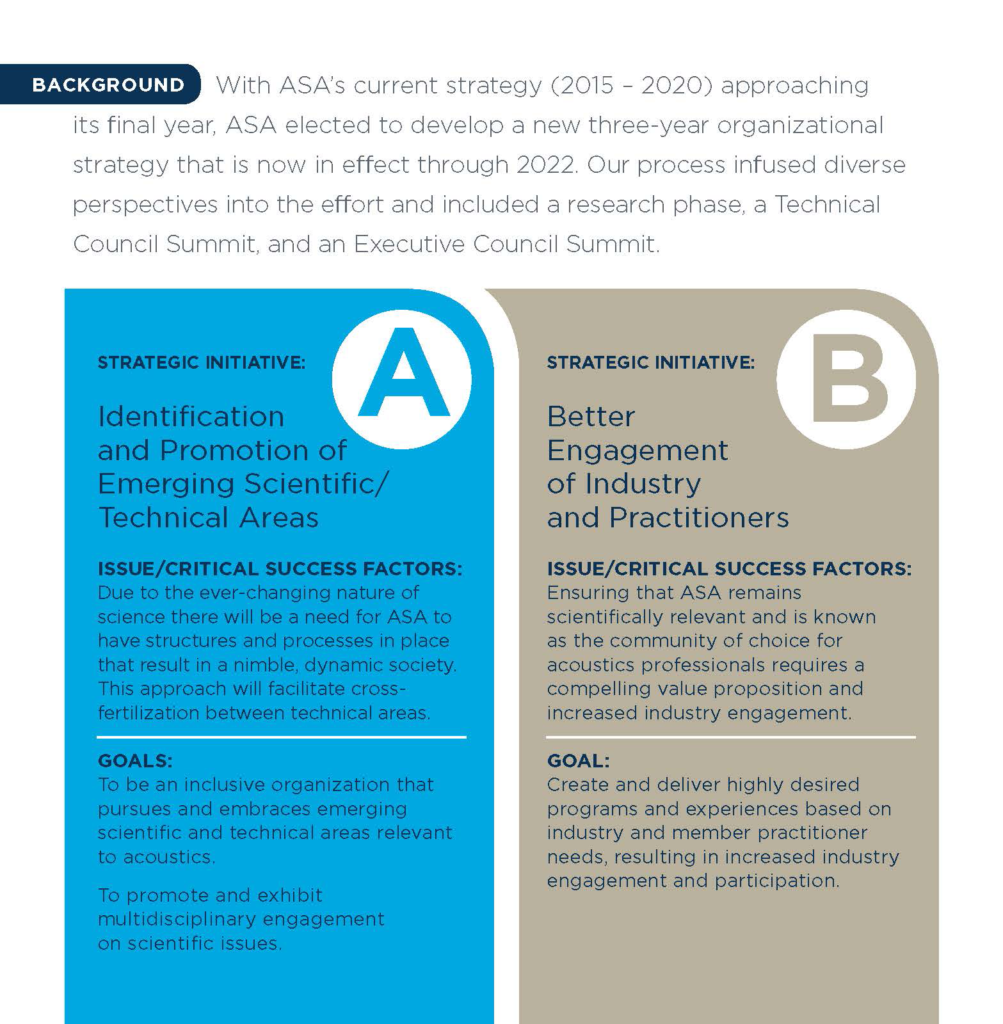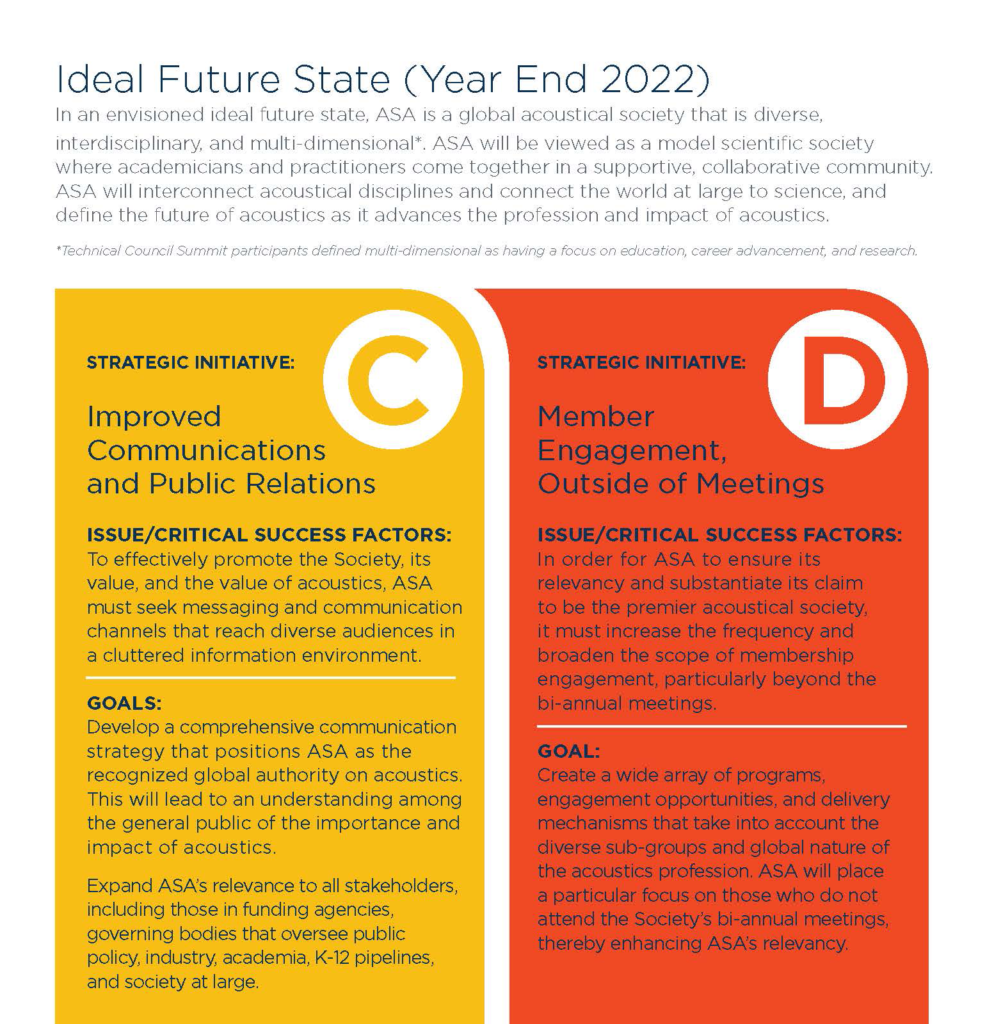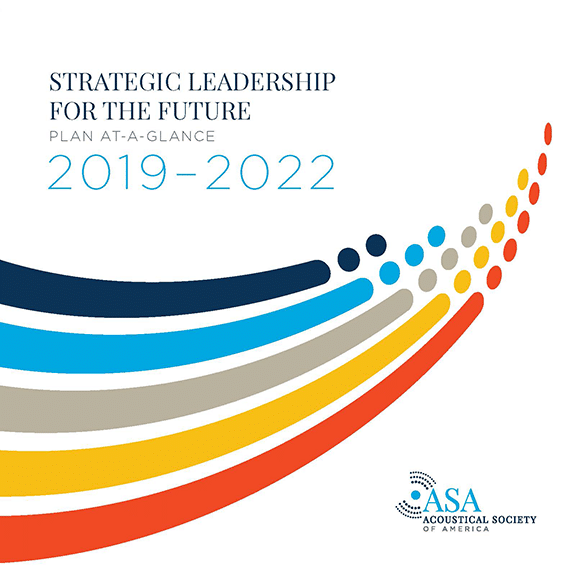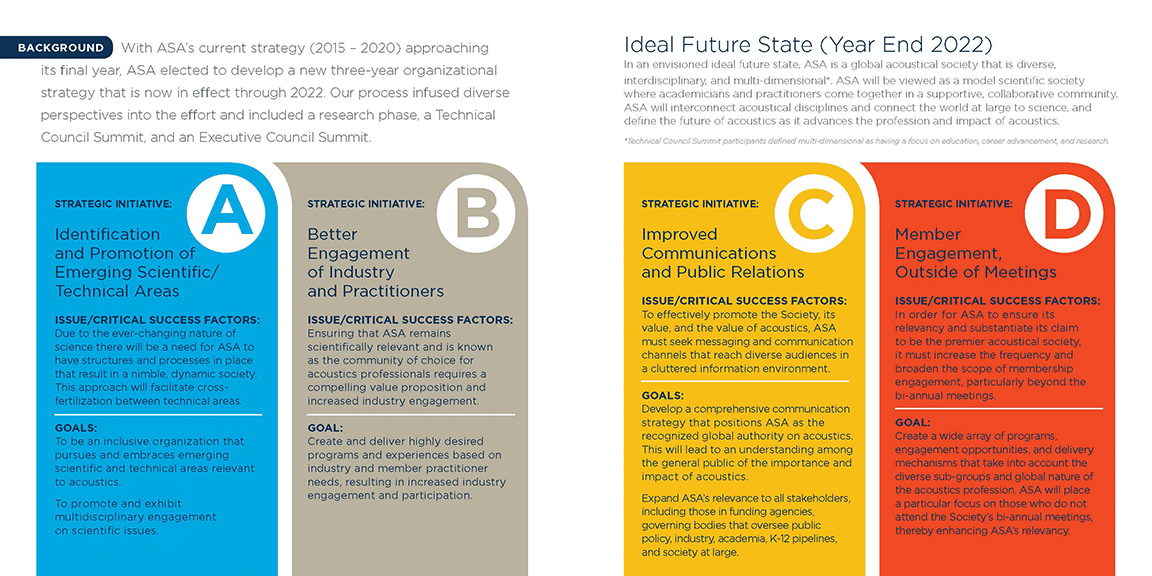
Committee to Improve Racial Diversity and Inclusivity
Committee to Improve Racial Diversity and Inclusivity
Committee to Improve Racial Diversity and Inclusivity
Mission Statement
Acoustics is stronger with diverse perspectives. The ASA is committed to increase racial diversity, equity and inclusivity (DEI), particularly of Black people, in acoustics. We are aware that underrepresented racial and ethnic groups within the field face substantial challenges. The Committee will provide guidance on how the acoustics community can attract and embrace these groups in acoustics-related fields and ultimately in the ASA. We aim to introduce two types of institutional change to proactively increase racial diversity, belonging and inclusivity within the society. First order changes modify processes, and include strategic planning, charging committees, and providing staff support. Second order changes modify norms, values and culture to ensure success of the first order changes. Second order changes include changing the organizational dynamic by getting members to understand the depth of and buy into the structural and cultural changes within the organization.
Committee Charge
A. Considerable documented strategies and approaches for increasing racial diversity within institutions and professional societies already exist, including the TEAM-UP document from the AIP. That document plus other material available online, submitted by committee members and other interested parties, will be used to identify first and second order mechanisms of change that can be implemented in the first year or recommended for future years. Suggestions will be sent to the EC.
B. First order mechanisms will be developed to increase representation and participation of racially diverse groups in the ASA. This includes:
• Outreach to students and professionals in related fields and societies.
• Facilitating development of additional support communities within ASA,
• Communicating broadly our values and plans around diversity and inclusion,
C. Second order mechanisms will be developed to build awareness of the value of DEI amongst the membership, and to improve the sense of belonging in ASA of underrepresented minorities. Such as:
• Increasing awareness of unconscious bias.
• Using and developing tools for being allies (OUCH training, Bystander Intervention training).
• Publicizing the goals and new initiatives and outcomes.
• Increasing the level of welcoming for POC by the entire membership.
D. The committee will suggest improvements to Society systems and processes based on increased cognizance at the ASA of the challenges faced by minority ASA members, by minority acousticians who might become members, and by students who might decide to become acousticians. These obstacles include finances, systemic obstacles, and lack of readily available information on ASA and acoustics.
E. The Committee focuses on racial inequities; the solutions will be applied to other underrepresented groups as well.
F. Develop and use an assessment strategy (metric) for the first and second order changes.
G. The Committee will submit a written report to EC to be discussed at the Spring, 2021 meeting. The report shall contain a brief summary of actions taken over the past year. It shall recommend whether the ad-hoc committee should be re-appointed, or otherwise continued in the future, or will have completed its work.
H. This ad-hoc Committee shall be composed of a Chair, a Vice Chair, and additional members appointed by the President to serve through the spring meeting of 2021. The committee meets bi-weekly.
Committee Members
Andrea P. Arguelles, Chair
Andrew R. Dykstra
Carol Y. Espy-Wilson
Noah D. Jenkins
Laura Kloepper
Adrian K. C. Lee
Susannah V. Levi
Brijonnay Madrigal
Alexandra M. Padilla
Kirby Parnell
Scott D. Pfeiffer
Tyrone Porter
Eric L. Reuter
Kimberly Riegel
Daniel A. Russell
Michael Smith
Marisha L. Speights-Atkins
Jessica Sullivan
Adam Svec
Ethan Wagner
Lily M. Wang
Elizabeth F. Weidner
Ex officio:
Ann R. Bradlow, Vice President
Stan E. Dosso, President
Judy R. Dubno, Treasurer
Susan E. Fox, Executive Director
Keeta Jones, Education/Outreach Coordinator
CIRDI INITIATIVES
The CIRDI Committee has held bi-monthly meetings since June 10th, 2020.
In order to improve racial diversity and inclusivity in ASA, we need to attract, educate, prepare, and support students of color to be successful in the field. To meet this goal, we propose the following series of initiatives and activities.




